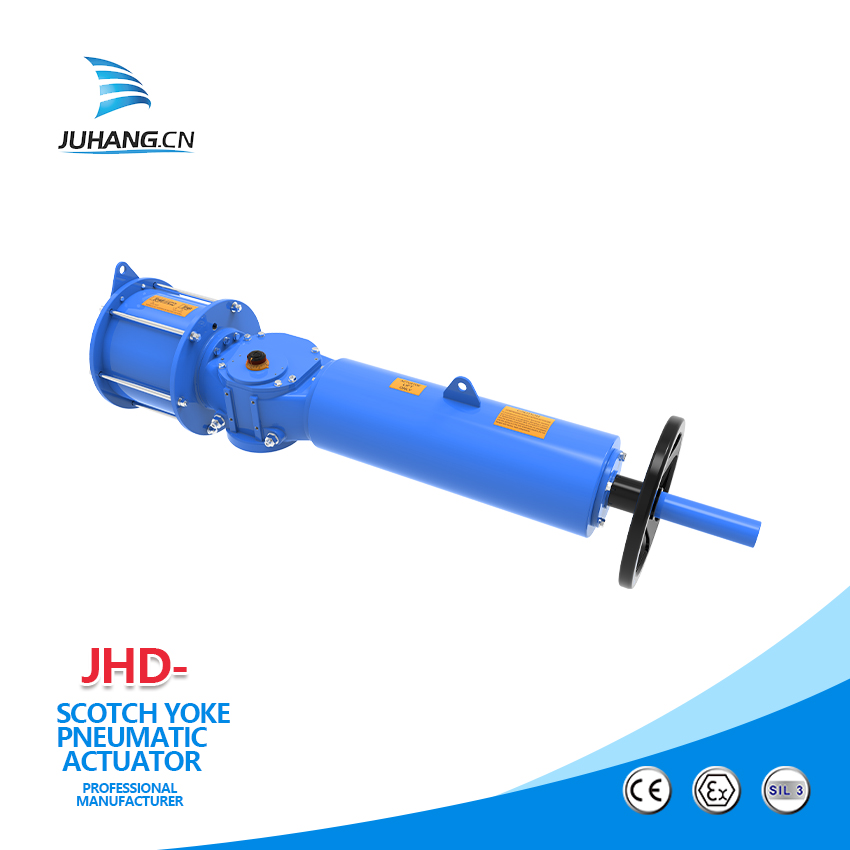How does a pneumatic actuator work
2024-01-12
A pneumatic actuator is a device that converts energy from compressed air into mechanical motion. Pneumatic actuators are commonly used in various industrial applications for tasks such as opening and closing valves, moving components, or controlling the position of objects. The basic principle behind the operation of a pneumatic actuator involves the use of compressed air to generate force and motion.

Here's a general explanation of how a pneumatic actuator works:
1. Compressed Air Source:
- The pneumatic actuator is connected to a compressed air source. Compressed air is a common and efficient power source for pneumatic systems.
2. Actuator Housing:
- The actuator housing contains a piston or diaphragm that can move within a cylinder. The type of actuator (e.g., rotary or linear) determines the specific configuration of the housing.
3. Control Valve:
- A control valve, often referred to as a directional control valve, regulates the flow of compressed air into and out of the actuator. This valve is typically operated by an external control system, such as a pneumatic controller or a manual lever.
4. Air Inlet:
- Compressed air enters the actuator through an air inlet. The control valve directs the air to one side of the piston or diaphragm, creating a pressure differential.
5. Piston or Diaphragm Movement:
- The pressure differential causes the piston or diaphragm to move within the actuator housing. The motion can be linear (back and forth) or rotary (clockwise or counterclockwise), depending on the actuator design.
6. Work Output:
- The motion of the piston or diaphragm is transferred to a connected mechanism or device, resulting in mechanical work. For example, in a linear actuator, the motion may be used to open or close a valve, move a lever, or control a process.
7. Exhaust:
- The control valve also allows the exhaust of air from the other side of the piston or diaphragm, ensuring that the actuator can return to its original position or be controlled in both directions.
8. Position Control:
- The position of the actuator can be controlled precisely by adjusting the airflow through the control valve. This allows for accurate positioning of connected components or devices.
9. Pressure Regulation:
- Pneumatic actuators often incorporate pressure regulators to control the pressure of the compressed air entering the system. This helps in achieving consistent and controlled actuation.
10. Feedback (optional):
- Some advanced pneumatic systems may include feedback mechanisms, such as sensors or position indicators, to provide information about the position or status of the actuator.
Pneumatic actuators are valued for their simplicity, reliability, and fast response times. They find extensive use in industries such as manufacturing, automation, and process control. The specific design and configuration of a pneumatic actuator can vary based on the application and requirements of the task it is intended to perform.


